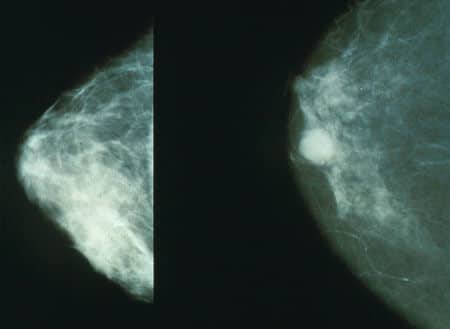Weizmann Institute scientists discovered that a treatment that combines the suppression of two molecules - EGFR and PYK2 - succeeds not only in delaying the spread of the tumor, but also prevents the formation of resistance to the treatment.

One out of every five breast cancers is a "triple negative" cancer - a cancer known to be aggressive and difficult to treat. This means that more than 300 women around the world are diagnosed with this type of cancer every year, and there is an increased risk that it will spread in the body and come back and attack. The cancer is called "triple negative", since it lacks three receptors that are usually used as a target for the treatment of this disease, therefore, people with this cancer can usually only be treated with chemotherapy, which is not always helpful.
But now a new combined drug treatment, developed at the Weizmann Institute of Science, may serve as a solution for a group of "triple negative" breast cancer patients. This treatment not only inhibits the spread of the tumor, but also prevents the formation of resistance to the treatment. the study degree recently In the journal Cancer Research. The research was led Prof. Sime Lev and the postdoctoral researchers Dr. Nandini Verma and Dr. Anna Katharina Muller, from the Department of Molecular Cell Biology at the Weizmann Institute of Science, in collaboration with colleagues.

As part of the study, the scientists took breast tissue samples from "triple negative" cancer patients, and found that some of them had higher levels of two molecules: EGFR and PYK2. EGFR - a receptor found on the surface of the cell membrane - is involved in several types of cancer, due to mutations or overexpression. PYK2 - a molecule that Prof. Lev previously identified - contributes to the process of the spread of cancer metastases in various cancers, including breast cancer. In the past, scientists believed that suppressing EGFR alone could benefit patients, but it soon became clear that the treatment is ineffective in humans, as the tumor develops resistance to treatment, which is partly due to the expression of another receptor from the same family, called HER3. This receptor "bypasses" the suppression of EGFR, thus allowing the tumor to spread.
However, in the current study it became clear to the scientists that if EGFR is suppressed in animal experiments, it is possible to partially stop the spread of the tumor. But if it is suppressed in combination with suppression of PYK2, the tumor disappears almost completely. Furthermore, they found that this combination also succeeds in overcoming resistance to treatment due to increased levels of HER3 expression. "We found that the inhibition of PYK2 accelerates the degradation of HER3," explains Prof. Lev, "and we also discovered the molecular mechanism involved in this process." We believe that the combined treatment of EGFR and PYK2 is a promising approach, which may help a subgroup of 'triple negative' cancer patients in a much more effective way compared to the combined treatments tried so far. This, in light of the combined treatment's ability not only to delay the spread of the tumor, but also to prevent resistance to the drug treatment."

One response
Owww Great